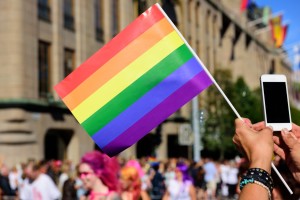
October is LGBT History Month, not be confused with June, which is Gay Pride Month. It’s important to know the heritage of gay rights in the United States. There were a lot of people who changed the environment for the LGBT community, allowing the Obergefell decision giving all people marriage equality. Unfortunately, there’s still a long way to go for full equality for everyone, regardless of sexual orientation and gender identification. Prior to the 1970s, homosexual men would be socially ostracized and possibly jailed as a criminal. Homosexual behavior was punishable by law. In 1924, a gay rights organization was formed, but it was only able to exist for a few months. It wasn’t until 1948 that Alfred Kinsey brought visibility to the gay male community, when he published “Sexual Behavior in the Human Male.”
The Gay Rights Movement
The official movement for gay rights began in 1969, following riots at the Stonewall Inn in New York City. During a police raid, patrons at the club fought back, instead of giving in and being taken to jail. Following the raid, many different organizations came together and sponsored demonstrations to promote civil rights for sexual orientation. The first scheduled march for gay pride would be on the one-year anniversary of the riots at Stonewall Inn. Activists in San Francisco, Chicago and Los Angeles also held activities to recognize the Stonewall riots.
Over the next decade, there would be many more actions that would push forward gay rights. Here are some names that you should know.
- Richard Baker applied for a marriage license in the state of Minnesota with James Michael McConnell. The case would go to the Minnesota Supreme Court, which ruled against the couple. Baker appealed. The case then found its way to the U.S. Supreme Court. The court dismissed the case. It would be another 41 years for same-sex marriages to be legalized in Minnesota.
- Thanks to the work of John E. Fryer, the American Psychiatric Association was forced to examine its position on homosexuality. In 1973, the APA removed homosexuality as a mental disease from the diagnostic standards manual.
- Gilbert Baker created the gay pride flag for a 1978 parade in San Francisco. He hand-dyed and stitched the original flag, along with 30 helpers. Each of the eight colors has a specific meaning. Hot pink is for sexuality. Red is for life. Yellow is for sunlight. Violet is for spirit.
A Significant Activist
One of the most famous activists of the 1970s is Harvey Milk. Milk has been honored with the Presidential Medal of Freedom for his work in the LGBT community. He has had a U.S Navy ship named after him. His face is on a U.S. postage stamp. He is remembered as the first openly gay politician elected to office in California. Milk never set out to be a politician. He only served 11 months in office, but he is recognized for his commitment and vision of gay rights. It’s possible that Milk would have gone on to do much more before his assassination by Dan White. White killed San Francisco Mayor George Moscone and Milk out of anger that Moscone refused to reappoint White to his position. Milk lobbied against reappointment. The case is even more significant because Dianne Feinstein would become the first female mayor of San Francisco because of this tragedy.
Although many people, even those outside of the LGBT community, recognize Milk as a significant figure in gay rights history, the other men mentioned here should be remembered for their contribution. In a few days, we’ll take a look at women who worked hard to change the tide for the LGBT community and bring equality to everyone, regardless of sexual orientation.

